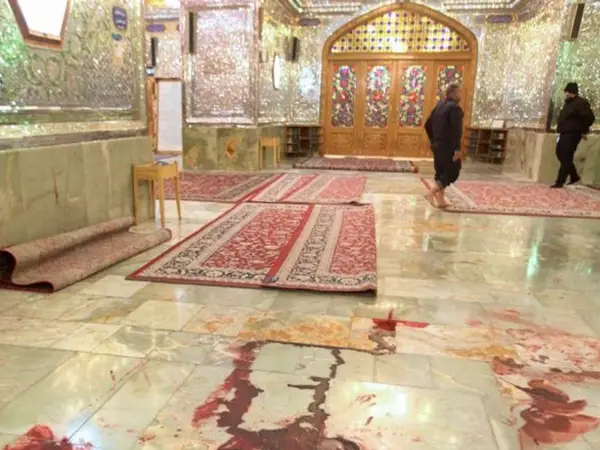Hacked documents recently released have cast serious doubts on the official account of a terrorist attack on a shrine in Iran last month which claimed 15 victims.
The documents are several reports prepared by the IRGC’s media arm, Fars news agency, which were marked “top secret” indicate that the author believed at least parts of Iran's several intelligence organizations had knowledge of an imminent terrorist attack but did not take any action to stop it.
The documents were acquired by the hactivist group Black Reward recently which provided them to the media. These include both hearsay and excerpts from various media outlets on important political issues.
One of the reports says information provided by a Syrian group, Iran’s intelligence ministry had arrested three Taliban members who were planning terrorist operations on Shiite shrines.
The date of the arrest is not mentioned in the report which was written in the aftermath of the attack on Shahcheragh shrine in Shiraz on October 26.
Hours after the attack, Reuters quoted a statement from an ISIS telegram channel saying that the group claimed responsibility. ISIS also released a statement through its affiliated Amaq news agency and said one of its members had targeted groups of Shiite “infidels inside the shrine.”
Many Iranians, however, have been very skeptical of the official account. They suspect the government of complicity with ISIS in the attack, to create its own narrative and martyrs to divert attention from fierce antigovernment protests.
The suspicion was partly due to the coincidence of the shooting with the 40th-day memorial for Mahsa Amini for which the opposition planned large widespread protests. Many also said this could be an excuse for blaming protesters for causing insecurity and justifying harsher suppression of their movement.
The author said some members of a terrorist group which was behind the Shiraz shooting had been arrested “several weeks before” with 18 kilos of explosives and recounted a rumor “in some political circles” about Salami’s decision to sack the IRGC commander of Shiraz.
He added, in different font, that the decision is believed to have been taken “because IRGC had prior knowledge of the attack on Shahcheragh”. The metadata of the document created November 11 indicates that this sentence was added by the author himself and was not a later addition by someone else.
The author of one of these secret documents wrote that the shooter, a citizen of Tajikistan, was taken down by an IRGC security agent who “happened to be present there for prayers.” The agent took his weapon from the lockers at the security gate, after hearing the shots, and rushed to encounter the shooter, he wrote, adding that the shooter had been to Afghanistan twice and taken the oath of loyalty to ISIS. He also wrote that even a police team that arrived at the shrine after the shooting had only been in the area for another operation.
According to the same document, the shooter was helped by an Afghan citizen residing in Tehran who stayed out of the shrine during the shooting and claims he was arrested in Tehran adding that the commander of the operation, a citizen of the Republic of Azerbaijan who had entered Iran legally on a visa, was also arrested on his way to Tehran.
According to another document also prepared for Salami’s attention, it has been claimed that the intelligence ministry had identified the Afghan member of the group who was arrested in Tehran “on the day of the incident” but did not announce the news “to gather more intelligence on the group.”
